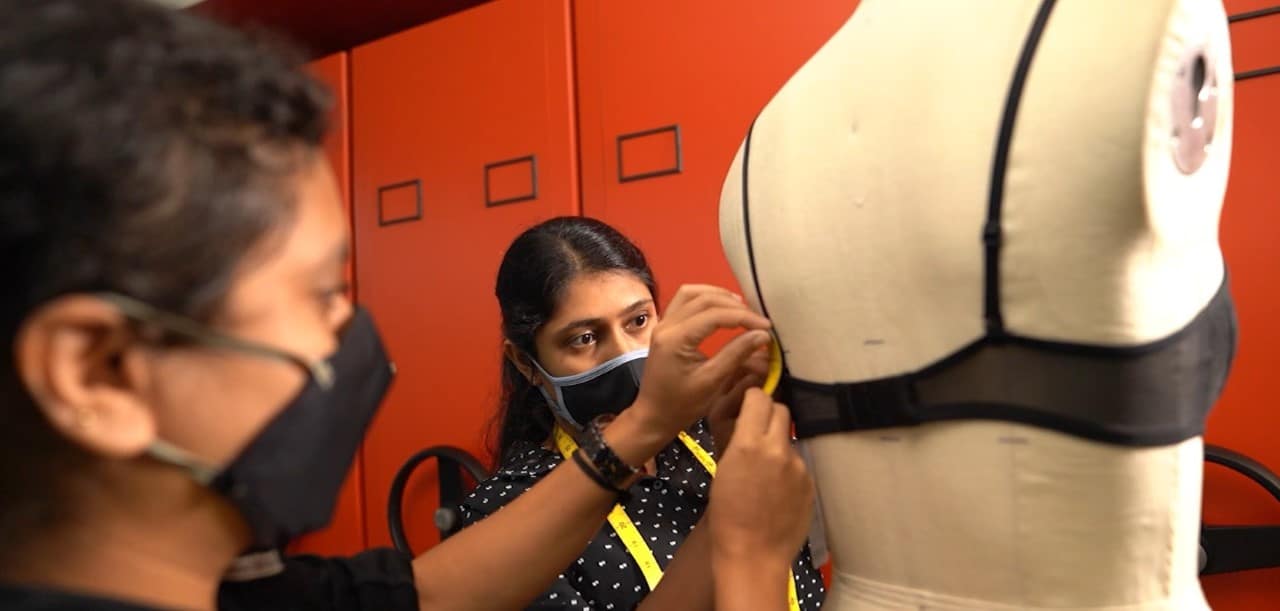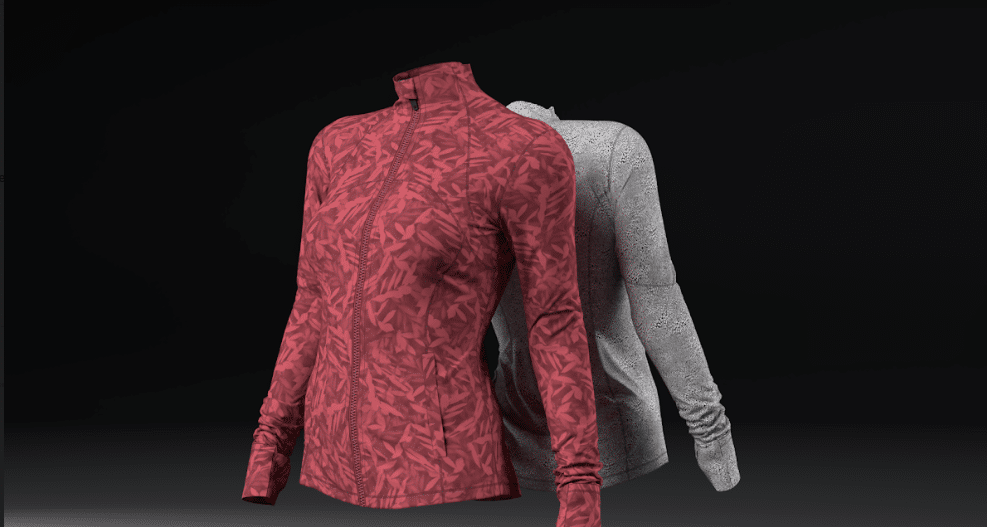
Leveraging digital product craftmanship for first-time-right physical sampling
By Anupama Fernando (Digital Evangelist and DPC Group Lead at MAS) · 18 Jan 2023
Design & Development
digital product creation
Digital Solutions
Sustainable Solutions
A SIGNIFICANT RESERVOIR OF DIGITAL PRODUCT CREATION EXPERTISE AND CRAFTSMANSHIP EXISTS IN THE SUPPLY CHAIN. IT’S NOW TIME FOR FASHION TO TAP INTO IT, AS THE DIGITAL EVANGELIST AND GROUP DPC LEAD FOR MANUFACTURING GIANT MAS HOLDINGS (WHICH DEVELOPS 3,000 STYLES IN 3D EVERY YEAR, ACROSS INTIMATES, ACTIVE, AND SWIMWEAR) EXPLAINS.
This opinion piece was originally published in The Interline’s DPC Report
A digital twin (DT) holds the power to change the way products are created made and sold. Digital twins that look and fit like their intended physical counterpart can bring about value creation that vastly exceeds a few cycles of sample replacement, or a few weeks of time saving. An accurate digital twin of a garment, shared between parties, can push the boundaries of traditional and sequential workflows and help us to fundamentally reimagine the future product creation and retail. Powered by that digital twin, collaboration across the value chain can have a powerful influence over production and sustainable consumption.
For brands, DTs open up endless possibilities - from commencing assortment reviews, B2B sales, simulating the full collection in a store, testing demand for new styles or even releasing the garment in virtual world. And the potential for a digital twin goes beyond a product development environment. A true to life digital twin could dramatically transform the End to End (E2E) process from creation to consumer, extending the life of a digital asset from development to consumer facing experiences. Challenging how products can be marketed and sold before being manufactured.
At a mature stage, DTs can move end to end from concept to photoshoot, empowering stakeholders to make as many creative and commercial choices as possible digitally. Taking decisions digitally means a faster development calendar that is now closer to the season. Products are far more relevant, which influences overall profitability through reduced mark downs, write offs and returns.
But the profitability potential of a digital asset doesn’t only flow downstream. A digital sample with the right foundational capabilities can move as much as 50%-60% faster through its lifecycle than the physical sampling process.
This may not be an instant benefit - at times, the first round of DT might be slower than physical sampling considering the effort that needs to be front-loaded into material digitization & garment creation - but as the DT moves from concept to sales samples, the effort required to push the sample from one round or stage of sampling to the other is incremental.
And, crucially, a DT follows an additive process whereas a physical sample is built all over again at every sampling need. So as the need for digital sampling grows, the speed of the overall workflow picks up drastically.
But accessing those speed benefits requires both partners to establish the right foundation capabilities. A well-resourced Digital Product Creation team will include robust and interconnected systems, material and block libraries and skilled talent at a minimum. It is important that these baselines are met so that best practices can be set in motion to achieve accurate development of DTs.
Prioritising the accuracy of digital twins is, therefore, an investment for any organisation - but it is one that will pay off far beyond a visually accurate DT, and one that will have compounded benefits as the product moves through technical sampling rounds such as fitting, and so on.
And if that priority is properly set, then the vision for first-time-right physical sampling can be reached - with the digital twin standing in for a physical asset at every stage until a physical sample is required.
Achieving this level of accuracy in DTs twins rely on the know how of people that build the digital twins. This know how will impact the ability to achieve a first time right physical sample. In a typical sampling stage, the first few rounds tend to be in digital and last in physical. When the DT is built with technical accuracy and vendor has the expertise to translate the digital garment to physical including all changes provided by the brand, a physical sample stands to be the final sample prior to moving forward to the next stage.
To build confidence in digital sampling, the fashion industry will therefore need to make use of expertise, digital craftsmanship, and best practices everywhere they exist in the value chain. In scenarios where 3D authoring tools may not yet be mature enough to replicate all the work associated with a physical sample, expertise in both physical and digital product development helps reduce the gap to a great extent.
Craftsmanship is at the heart of true to life digital twins, since these are not just aesthetic representations of a garment, but full digital counterparts - meaning that the digital asset will need to incorporate all the technical hallmarks of the physical product. Or, to put it another way, for fashion to make use of 3D and DPC tools as a way to truly revolutionise the creation of physical products, the industry will need to lean heavily on the skillsets and talent of the teams that develop those digital twins.
For example a creative 3D artist with access to good hardware and software can develop a life like digital product, however, the skill set for true to life DT requires a whole host of skills from knowledge on authoring tool, technical product expertise, material behaviour, fit technology, and a creative skill set. Achieving a first time right physical sample requires the digital sample to be built in an approach that consistently has the end goal in mind during the process, which is a technically accurate DT that can be translated to a physical product.
The path to an accurate translation from digital to physical is through the people that build and review digital garments.
Technical teams that develop physical product possess the required skill set for this translation. Bringing the same talent that work on the physical to digital workflow is how I believe craftsmanship is going to be successfully transferred from the physical realm and into digital product creation. While creative design and experimentation remain vital stages of digital product creation, 3D technologists that come from a background of product development, and who understand how the digital product should be built for a first time right physical sample, will also be essential pieces of the puzzle.
Quality assurance processes, for example, play an equally important role in auditing digital twins as they do with physical samples - especially if those digital assets are being used to make critical creative and commercial decisions. This step ensures the DT is built according to the brand guidelines, setting and meeting as a virtual quality standard, and ensuring that the digital twin represents a technically accurate and manufacturable garment. Translating the best practices from physical review to the digital workflow ensures that the digital garment is reviewed with the same level of quality and due care as the physical sample.
In our experience, driving adoption of DPC at a whole-industry level will mean building trust in the digital samples. Trust is established when brands believe that the vendor partner has the right physical and digital skill set to translate from DT to a first time right physical product. To build this trust the vendor partner must appreciate what the digital twin can and cannot do, when to manipulate the garment to achieve visual accuracy, and when not to.
DTs built with the objective of standing in for physical samples at every possible juncture will ensure the end digital garment accurately represents the physical product. And with this foundation set, decision makers can surface issues early and re-evaluate technical feasibility on an ongoing basis. Absence of understanding the end use of the digital sample, by contrast, will result in over engineered product and heavily manipulated DT that achieves visual accuracy at the expense of technical feasibility.
Reaching maturity in DPC can be unlocked through continuous learning and collaboration across brands and tech partners, and through leveraging vendor’s own expertise in product craftsmanship and best practices of the physical workflow. Success in Digital Product Creation, then, is not only attributable to acquiring the right technology, but also building the right balance of people process and technology.
And achieving sustainable value creation in DTs means having the right talent, the right scalable workflows, and the right approach to value chain collaboration, making use of the technical expertise that the right manufacturers have worked to establish.







